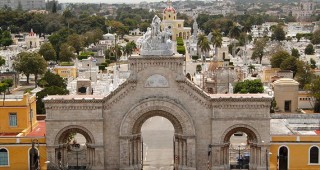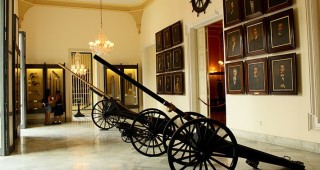By 1790, this originally mangrove swampy area became Campo de Marte, a military practice range, which was expanded in 1793 thanks to a project by Belgian engineer Agustin Cramer. And after Bishop Espada improved the lighting on the place, it was up to Captain General Don Miguel Tacón to include it within the scope of his city embellishment program. The area was then fenced and four majestic gates, crowned with coats of arms were built, each receiving the name of an important personality: the north gate, Cortez; the south one, Pizarro; and the east and west gates, Tacón and Colón respectively.
The military practice range first became a park in 1892 to commemorate the fourth centennial of the discovery of America, and in 1928 it became Parque de la Fraternidad, as is known today, in commemoration of the VI Pan-American Conference, held in Havana. A silk cotton tree, called ‘Tree of American Fraternity,’ was planted in the center of the park with soil from 28 countries of the Americas. A few years later, on the initiative of the SociedadCubana de EstudiosHistóricos e Internacionales, busts of personalities and heroes representative of the Latin American thinking and fraternity were erected, including those of Simón Bolivar and Benito Juárez.
This park, which is actually a group of parks, has witnessed historical events such as the taking off and disappearance of Matías Pérez, a Portuguese inventor, on his hot-air balloon on June 29, 1856; and the first celebration of Labor Day in Cuba on May 1, 1890.



 Eclectic
Eclectic








